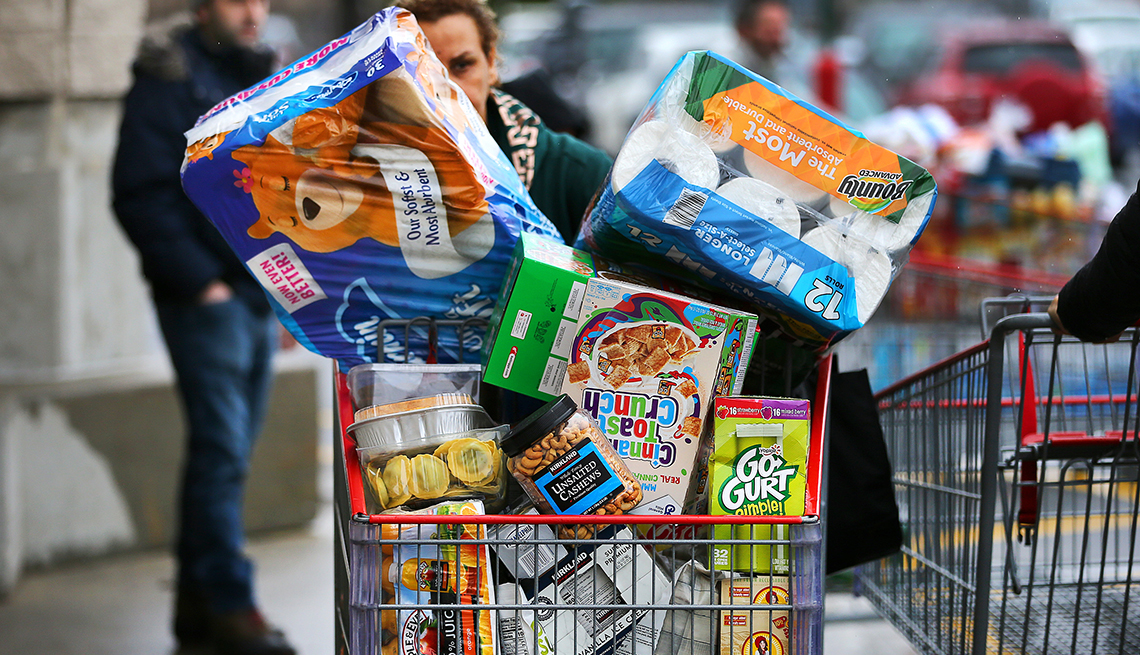Monthly grocery costs in the Philippines vary from PHP 4,000 to PHP 12,000 due to location, family size, and preferences.

Average Grocery Costs
Overall Monthly Estimate
Based on data collected from various cities and provinces, the average monthly grocery cost for a single individual in the Philippines ranges between 4,000 to 6,000 PHP. For a family of four, the estimate rises to around 12,000 to 20,000 PHP per month. It’s important to note that these figures can vary significantly based on personal preferences and consumption habits.
Price Range for Common Items
Here is a list of some commonly purchased grocery items along with their average price range in the Philippines:
- Rice: A staple in Filipino diets, a sack of rice can cost between 1,200 to 2,000 PHP depending on the quality and type. Rice in the Philippines is also an essential agricultural product.
- Meat and Poultry: Expect to spend around 200 to 300 PHP per kilogram for pork and 150 to 250 PHP for chicken. Beef is generally more expensive, costing around 300 to 400 PHP per kilogram. Livestock farming is an important part of the agriculture sector in the Philippines.
- Fish: Prices can vary greatly depending on the type and availability, ranging from 100 to 300 PHP per kilogram.
- Fruits and Vegetables: Seasonal and local varieties like bananas, mangoes, and leafy greens can cost anywhere from 50 to 100 PHP per kilogram.
- Dairy Products: A liter of milk is usually priced at 80 to 100 PHP, while a block of cheese can cost around 200 PHP.
- Bread and Bakery Items: A loaf of bread generally costs around 50 to 70 PHP, while pastries and cakes have a wider price range, from 100 to 300 PHP depending on the type and brand.
- Beverages: Prices for soft drinks and juices start at around 20 PHP for a small bottle, while coffee and tea products range from 150 to 300 PHP per pack.
Factors Affecting Grocery Costs
Geographic Location
- Urban vs Rural: Groceries are generally more expensive in urban areas like Metro Manila compared to rural regions. Higher operational costs and increased transportation fees contribute to the price difference.
- Tourist Areas: Places that attract a high volume of tourists, such as Boracay or Palawan, often have inflated grocery prices due to tourist markup. You can learn more about the Geography of the Philippines to understand how locations can affect costs.
Seasonal Availability
- Fruits: Costs of fruits like mangoes and durian fluctuate based on their harvest seasons. Prices are generally lower when these fruits are in season.
- Vegetables: The same principle applies to vegetables like tomatoes and onions. Prices are dependent on their respective harvest seasons.
- Fish and Seafood: Prices can also vary depending on the fishing season. Gaining insights into the agricultural seasons can help you shop more economically.
Brand Choices
- Local Brands: Opting for local brands can be more affordable than going for imported ones. For example, local rice is generally cheaper than imported varieties like Jasmine or Basmati.
- Imported Goods: Imported brands usually come with a premium price due to the costs of shipping, customs duties, and often, a perception of higher quality.
Grocery Price Comparison
Traditional Markets vs Supermarkets
- Variety: Supermarkets generally offer a wider variety of products, from international foods to household items, whereas traditional markets focus more on fresh produce and local goods.
- Pricing: Traditional markets often have more negotiable prices and may offer cheaper options for fresh produce like fruits, vegetables, and meat. However, supermarkets can offer sales, discounts, and loyalty programs that might make them more economical in the long run.
- Convenience: Supermarkets provide a one-stop shopping experience, usually in air-conditioned spaces, whereas traditional markets are open-air and require more effort in terms of navigating multiple stalls.
- Freshness: Traditional markets often offer fresher produce, as they usually source their goods directly from farmers. You can read more about the traditional Public markets in the Philippines to understand this aspect better.
Local Brands vs Imported Goods
- Cost: Local brands are generally more affordable due to lower production and transportation costs. Imported goods usually carry a premium due to shipping, taxes, and customs duties.
- Availability: Local brands are more widely available across various stores, while imported goods might be restricted to larger supermarkets or specialized stores.
- Quality Perception: Imported goods often carry a perception of higher quality or specialty, which can justify their higher prices to some consumers.
Organic vs Non-organic
- Price: Organic products typically cost more than their non-organic counterparts due to the more expensive farming practices and certification processes involved.
- Health Benefits: Organic items are perceived as healthier options because they are free from synthetic pesticides and fertilizers. However, this perception might contribute to the higher cost. Learn more about the Organic farming practices to understand the price difference.
- Environmental Impact: Organic products usually have a lower environmental impact, which might justify the extra expense for eco-conscious shoppers.
Budget Tips for Grocery Shopping
Buying in Bulk
- Cost-Effective: Purchasing items like rice, pasta, and canned goods in bulk can offer significant savings over time. However, make sure to compare unit prices to ensure you’re getting the best deal.
- Storage: Make sure you have sufficient storage space before you opt for bulk buying. Consider the shelf life of the products to avoid waste.
- Membership Stores: Stores like S&R and Landers offer bulk purchase options at discounted prices. However, they usually require a membership fee.

Shopping During Sales
- Seasonal Sales: Pay attention to seasonal sales events, especially during holidays and festivals, to grab items at a reduced cost.
- Weekly Promotions: Many supermarkets offer weekly promotions on fresh produce, meat, and dairy products. Keep an eye on flyers and online updates for such offers.
- Off-Peak Shopping: Some stores reduce prices on perishables late in the day to clear stock. Learn more about the economics of sales to understand the best times to shop.
Using Coupons and Rewards
- Coupon Apps and Websites: Utilize coupon apps or websites that aggregate discounts and offers for various grocery stores.
- Loyalty Programs: Most supermarkets have loyalty programs that allow you to collect points on purchases, which you can later redeem for discounts or free items.
- Store Apps: Many stores have their own mobile apps that provide exclusive discounts to app users.
Regional Variations
Metro Manila vs Provincial Cities
- Cost of Living: Groceries in Metro Manila generally cost more than in provincial cities. The higher cost of living in the capital contributes to these elevated prices.
- Variety: Metro Manila supermarkets and stores typically offer a more extensive range of products, including imported goods, than those in provincial cities.
- Local Produce: Provincial cities may offer better prices on local produce as they are usually closer to the source, thus reducing transportation costs. More information on the economic structure of the Metro Manila area may offer insights into these differences.
Island vs Mainland
- Transportation Costs: Groceries on islands generally cost more due to the added expense of transporting goods from the mainland.
- Local Seafood: On the flip side, islands may offer fresher and cheaper seafood options because of their proximity to fishing areas.
- Limited Choices: Island locations may have fewer options when it comes to branded and imported goods, often leading to higher prices for available items. To know more about the geography affecting these aspects, you can refer to the Islands of the Philippines.